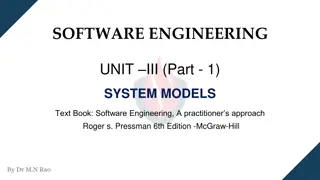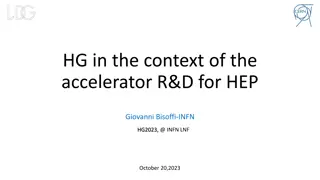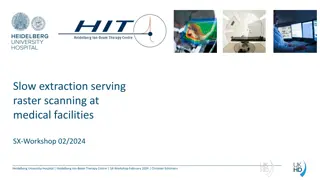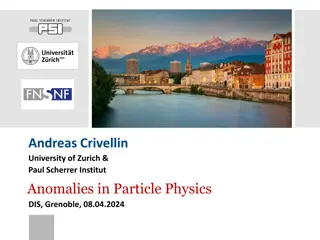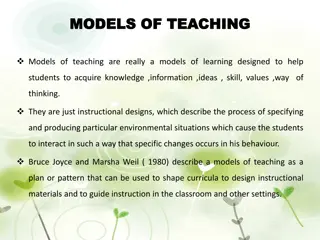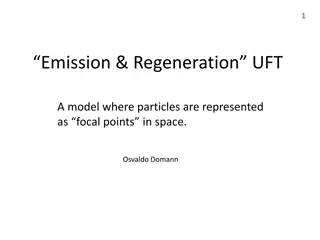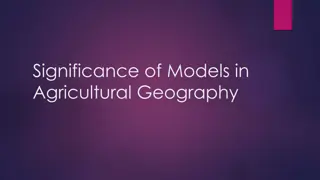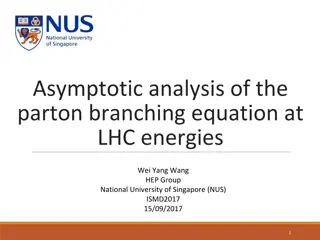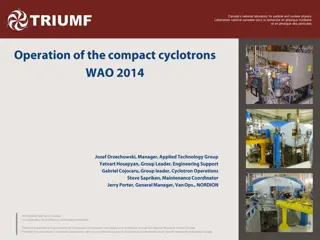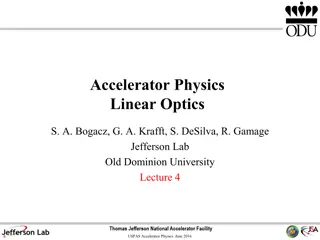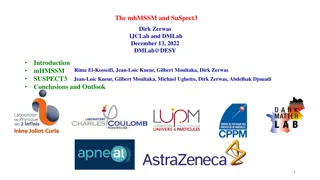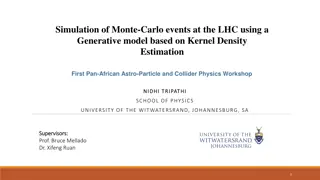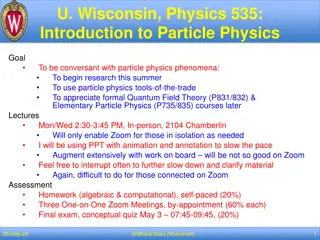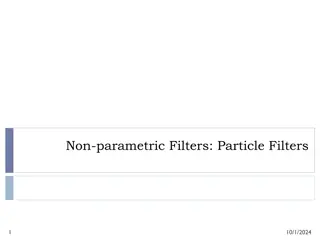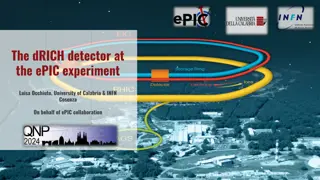Particle Models
Students explore various models of matter, including the Particle Model and the Lego Atomic Model. They examine differences in separation and speed to understand solids, liquids, and gases. Activities involve drawing particle positions, creating tableaux, comparing materials for crystal formation, viscosity, and ductility, and exploring chemical reactions with Legos. Conservation of mass and constant proportions concepts are explored through hands-on experiments, providing a deeper understanding of matter properties.
Download Presentation

Please find below an Image/Link to download the presentation.
The content on the website is provided AS IS for your information and personal use only. It may not be sold, licensed, or shared on other websites without obtaining consent from the author.If you encounter any issues during the download, it is possible that the publisher has removed the file from their server.
You are allowed to download the files provided on this website for personal or commercial use, subject to the condition that they are used lawfully. All files are the property of their respective owners.
The content on the website is provided AS IS for your information and personal use only. It may not be sold, licensed, or shared on other websites without obtaining consent from the author.
E N D
Presentation Transcript
As students go through the high school curriculum they learn about many different models of matter. List as many as you can on the whiteboard.
Grade 9 (Review): The Particle Model of Matter The particle model uses differences in separation and speed to explain the properties of solids, liquids and gases.
Draw the position and speeds of five particles to show how they differ for the three different states.
Make a set of three tableaux that clearly how the differences between a solid, liquid and gas. Note: A tableaux is static and does not involve words. You may use props.
Explore the three provided materials. Which one best demonstrates the formation of crystals, viscosity or ductility? Which has the highest melting point?
Explore phet.colorado.edu/en/simulation/states-of-matter-basics Why do the substances have different boiling/melting points?
Grade 9 or 10: The Lego (Atomic) Model of Matter The particle model is able to explain physical properties and changes. However, it doesn t explain what happens in a chemical reaction. The Lego model can explain three laws of chemical reactions.
Conservation of Mass: Weigh your Lego particles. Separate them into large and small pieces and weigh the two piles. How does the mass of the reactant compare to the mass of the products?
Constant Proportions: Divide the mass of the large pieces by the mass of the small ones. Record your results on the board. Which groups have the same particles? How are compounds different from mixtures?
Multiple Proportions: Compare compound A to the others by dividing the larger ratio by the smaller one. Repeat for compound D. Which values are very close to a whole number? Why?
Sample big + big pieces 34 little pieces big/little A vs.__ C vs.__ compound little 46 2.83 1.00 ~ 1 15 (8B + 2B) A 12 2.32 3.04 ~3 12(8B + 3x2B) B 56 27 29 0.931 2.50 C 40 22 18 1.22 2.32 1.00 ~ 1 10 (8B + 6B) 0.614 1.99 ~ 2 12 (8B + 2x6B) D 71 27 44 4.63 2.81 1.01 ~ 1 20 (8B + 2B) E 91 45 16 2.30 3.95 ~ 4 16(8B + 4x2B) F 91 38 53 0.717 3.24 2.93 ~ 3 G 68 20 48 0.417 6.79 9 (8B + 3x6B) 2.01 ~ 2 H 70 41 29 1.41 1.16 13 (8B + 2x2B) 0.615 1.98 ~ 2 11 (8B + 2x6B) I 63 24 39 4.60 2.73 1.04 ~ 1 13 (8B + 2B) J 41 30 11 2.24
Grade 9 or 12 Rutherford s gold foil experiment: Rutherford shot small positive particles called alpha particles - at a thin gold foil. Most went through. About 1 in 8,000 came back.
Model the experiment by releasing a ball on a track that is > 30 cm away from the curved base of a wine glass. Try to get the ball to come straight back onto the track.
What did you have to do to succeed? What aspects of the challenge were like Rutherford s experiment? What aspects of the challenge were very different from Rutherford s experiment?
Make a set of three tableaux that show the very different behaviours of alpha particles with identical velocities heading toward a gold nucleus. Show the particles when they are very far from the nucleus, at their closest position and a short distance after this.
Sketch the paths of three alpha particles. Include arrows to indicate their speeds at various points. Make sure that energy is conserved.
Check your diagram using phet.colorado.edu/en/simulation/rutherford-scattering
Grade 9: Molecular Bonds The non-metal elements just need a few extra electrons to become stable. The way they do this is by sharing electrons.
Imagine that you and your fellow students are hydrogen atoms. You each have a pen in your right hand to represent your one electron. Each student wants one more electron so it will be like helium.
Turn to a neighbour and grab their electron with your left hand without letting go of your one electron. What happens?
How would you act out the formation of molecular bonds between atoms of Cl, O or N?
How would you act out the formation of molecular bonds between atoms of Cl, O or N?
Molecular bonds are very strong but molecules have very low boiling points. Explain why by silently acting out what happens when these compounds boil.
Grade 9 Ionic Bonds: These form between metals that want to lose electrons and non- metals that want to gain electrons.
You are going to model the formation of sodium chloride. Each student will be randomly assigned to be either sodium or chlorine.
Sodium atoms have an electron card that they want to get rid of and chlorine atoms want to get one of these. Find someone to react with and transfer the electron.
Now the sodium students are positive and want to surround themselves with four chlorine students. The chlorine students are negative and want to surround themselves with four sodium students. What happens?
Draw the 2-D arrangement of sodium and chlorine ions in a solid. How will the 3-D version be different?
Sodium chloride forms crystals with flat faces and sharp edges. Why?
Ionic compounds will not conduct electricity unless they are melted or dissolved in water. Why?
Ionic compounds have much higher melting points than molecular compounds. Why?
Grade 12 Quantum Physics Wave-Particle Duality: The Challenge of Quantum Reality (PI Resource)
Grade 12 Quantum Physics The Quark Model: Taming the Particle Zoo (PI Resource)
Grade 12 Quantum Physics The Randomness of Particle Decay: Radioactive decay was discovered over a century ago. It is a quantum process.
Suppose you have 100 new computers and you graph how many are still working each following year. What will the graph look like? A B C D
Suppose you have 100 grade 12 students and you graph how many are still alive each following year. What will the graph look like? A B C D
Suppose you have 100 radioactive atoms and you graph how many are still undecayed each following year. What will the graph look like? A B C D
The pattern of radioactive decay is very different because the decay is not a result of the atoms wearing down in some way. Instead, the process is completely random. That is why we know it is a quantum process.
You will simulate radioactive decay with 100 dice. When the dice are rolled, a one means that it has decayed and is removed. Predict how many undecayed dice you will have after each round. What is its half-life?
Roll the dice. Explain the differences between your predictions and the results. How is this randomness different from the randomness of radioactive decay? How is this like the double slit experiment?
Explore the randomness and quantum tunneling of alpha decay. http://phet.colorado.edu/en/simulation/alpha-decay
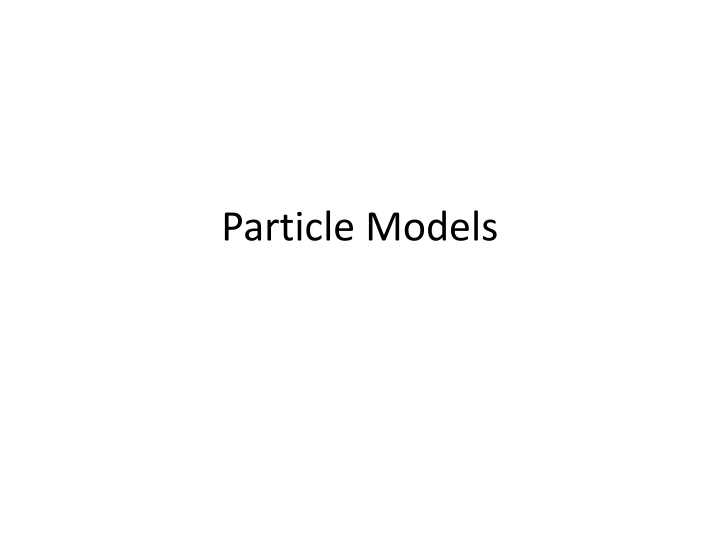

![[PDF⚡READ❤ONLINE] Cosmology and Particle Astrophysics (Wiley-Praxis Series in As](/thumb/21627/pdf-read-online-cosmology-and-particle-astrophysics-wiley-praxis-series-in-as.jpg)

